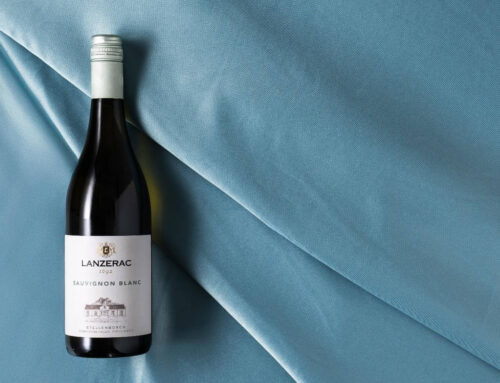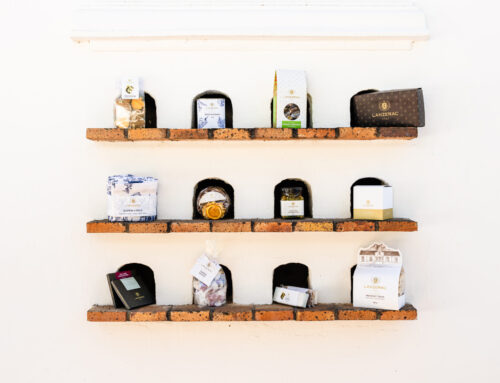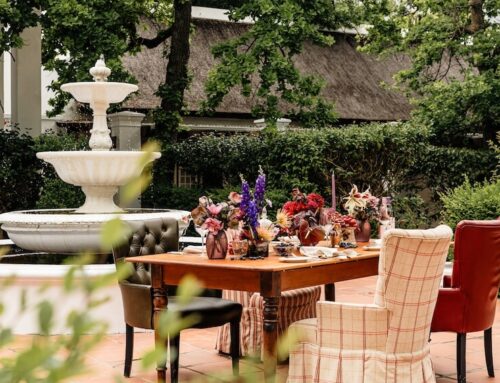Whether you’ve just received a wedding invitation with “black-tie optional” embossed on the bottom of the 170 GSM card stock with the gold gilt edges, or are psyching yourself up about the company fundraising gala’s sit-down dinner; you’re right in assuming there is more to a fine dining experience than your standard table manners.
While the vast amount of cutlery and crockery at your place-setting alone is enough to drive weaker men to tears, rest assured, we’ve got you covered.
By the time you’re through with our ultimate guide to fine dining etiquette, you’ll be ready for tea and crumpets with Her Majesty; never mind a formal wedding.
For more on the amount of courses you can expect, which cutlery to employ when, and which wine to order with which meal; read on!
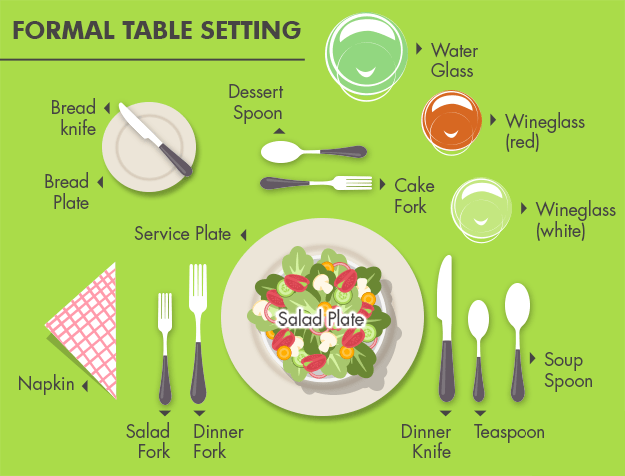
The Different Fine Dining Meal Courses You Can Expect
The amount of courses, and the manner in which they are presented is entirely dependent on the type of fine dining event you are attending.
At a wedding, for example, there may be no menu from which you can choose your meal. You may have had to indicate your meal choice in advance and you may be served anywhere from 3 to 6 plated courses during the evening.
When eating at a fine dining establishment at which a menu is offered, and you are free to make your own selection, you may have more of a hand in deciding the amount of courses you’ll be enjoying.
While certain upscale restaurants also offer set or fixed tasting menus comprised of (x)-amount of set courses, if you are planning to order your preferred courses from the menu, it is best to allow your guests to set the tone.
In other words, if you are the host of the dinner, your guests set the tone. If your guest orders 3 courses, you order 3 courses. If your guest opts not to order a particular course, you forego that course as well.
This is because it is considered universally bad etiquette to allow your guest to eat (a course) alone, or to eat when your guest has chosen not to partake of that course and is now sitting without food in front of them while you eat.
The following may help you anticipate what you’ll be eating throughout the evening if the invitation or establishment specified an amount of courses but did not share the menu with you:
1 Course meal – expect a main course only.
2 Course meal – expect an appetizer and a main course, or a main course and a dessert.
3 Course meal – expect an appetizer, a main course, and a dessert course.
4 Course meal – expect an appetizer, an entrée, a main course, and dessert.
5 Course meal – expect an appetizer, an entrée, a main course, dessert, and a cheese course.
6 Course meal – expect an appetizer or hors d’oeuvres, a soup course, a fish course, a salad course, your main course, and a dessert course.
Fine Dining Etiquette When Deciphering Your Cutlery
While you may be absolutely intimated by the vast array of cutlery at your place-setting, a good rule of thumb is just to take a cue from your host if you are a guest and to match their selection and use of a particular piece of cutlery.
You can also just start on the outside and work your way in if you are the host, or if your host is not clearly visible to you for the purposes of following their lead.
This means that you will start eating your first course with the knife and fork set furthest away from the plate and that you’ll work your way toward the cutlery set nearest the dinner plate as the courses, and evening, progress.
If you see any cutlery, such as a spoon, a fork, or both, set horizontally above your plate; don’t panic. These are your dessert- or dessert course utensils, and they will be employed only on the final course of your meal, once all other courses have been served and all other cutlery and crockery has already been cleared.
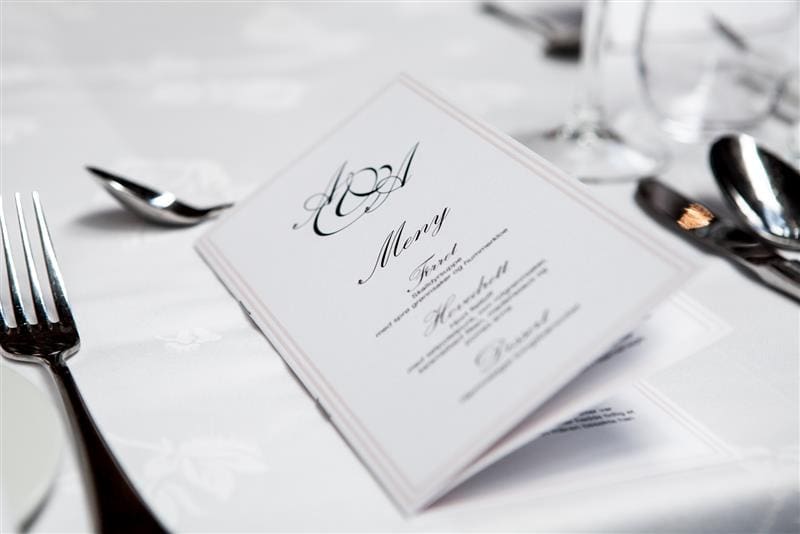
Other outliers may include butter knives, which may have to be requested, special items of cutlery presented with a specific course, such as your tongs which may arrive with your escargot, and your bread knife which will be laid upon or next to your bread plate and not alongside the rest of your cutlery.
Sometimes, restaurants may inadvertently save you from embarrassment by presenting the correct items of cutlery with the correct course.
In other words, you may not arrive to and be seated at a full place-setting, but have your clean course-appropriate cutlery presented to you at the time of each course’s serving, and your dirty cutlery removed with the plate at the end of each course.
Pro Tip: Remember, a dropped piece of cutlery is never to be retrieved by you. The waitron or butler will bring you a clean utensil, and the dropped item will be retrieved by the staff presently if it is within reach, or will be retrieved after the meal if it is not.
Fine Dining Glassware – What Every Glass Is For
When you are setting a table for a multi-course dinner, always remember “BMW”. That means that from left to right the place-setting should run: Bread, Meal, Water.
The glassware is thus always placed on the right-hand side of the place-setting, as the table is always set for right-handed guests. Your glassware may consist of up to 4 separate glasses:
- Your Red Wine Glass
- Your White Wine Glass
- Your Champagne Flute (if there is going to be toasting)
- And Your Water Glass
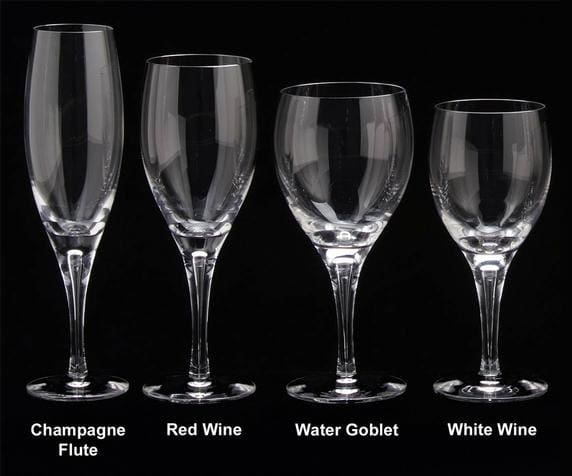
These glasses will be arranged either in a square shape or pattern, or in a diagonal line at the top right-hand side of your place-setting. Your waiter or server will fill your water glass when you are seated, and your sommelier will pour the wine once the host has selected a bottle.
Should you not wish to partake of a wine, it is sufficient to indicate to your waiter, server or sommelier, that you do not wish to partake. It is considered universally bad etiquette to put your glass out of reach of your server, or to cover your wine glass with your hand upon their approach.
As such, avoid such boorish behaviour by indicating to your server upon your arrival if you do not consume alcohol, or wish not to partake of a particular wine, and they may remove the relevant glass from your place-setting, thereby indicating to all alternate servers and service providers that you will not be drinking a particular wine.
When your sommelier is pouring your wine, it is perfectly acceptable to indicate to them when you feel you have enough, or if you only want half a glass, for instance; but such indications are always verbal, never gestural.
Furthermore, you should never hold your glass for your server to pour your wine. If anyone is holding the glass, your server should hold the glass, and then only by the stem, never by the bowl so as to avoid unnecessarily affecting the temperature of the wine in the glass.
Food and Wine Pairing Options When You Are Fine Dining
You need not be a wine connoisseur to order a fine wine at a fancy restaurant. Wine pairing is what your sommelier does for a living, and trusting their opinion is more than enough to ensure your guests receive a wine that perfectly complements their meal.
When selecting a wine to accompany a meal, and/or selecting a wine from the wine list, it is not necessary, or good etiquette, to announce your price range to your sommelier. It is more than adequate simply to point to a wine in your price range on the wine list.
Your sommelier will understand that this wine is indicative of the amount you were looking to spend/your price range and will only recommend wine’s within your price range.
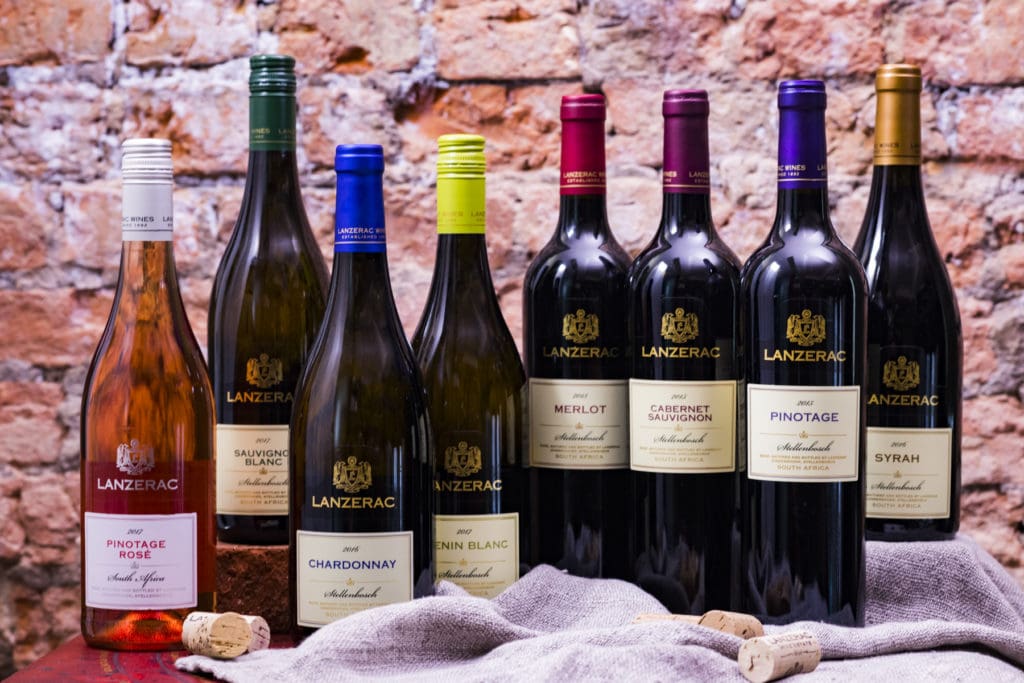
As a general rule (should you wish to bring your own wine, or are hosting a fine dining function in your own home) the following wines complement the following meals:
Red Meat: Bold Red (Cabernet Sauvignon, Syrah, Monastrell, Aglianico, Malbec) OR Medium Red (Merlot, Zinfandel, Grenache, Tempranillo, Sangiovese etc.)
White Meat: Medium Red (Merlot, Zinfandel, Grenache, Tempranillo, Sangiovese etc.) OR Light Red (St. Laurent, Pinot Noir, Zweigelt, Gamay) OR Rich White (Chardonnay, Roussanne, Marsanne, Viognier)
Rich Fish: Light Red (St. Laurent, Pinot Noir, Zweigelt, Gamay) OR Rich White (Chardonnay, Roussanne, Marsanne, Viognier)
Fish: Rich White (Chardonnay, Roussanne, Marsanne, Viognier) OR Sparkling (Sparkling Wine, Champagne, Prosecco, Cava) OR Dry White (Sauvignon Blanc, Pinot Grigio, Albarino, Grüner Veltliner)
Desserts: Dessert Wines (Late Harvest, Ice Wine, Sherry, Port) OR Sweet White (Gewürztraminer, Moscato, Müller-Thurgau, Riesling, Malvasia)
Starches: Bold Red (Cabernet Sauvignon, Syrah, Monastrell, Aglianico, Malbec) OR Medium Red (Merlot, Zinfandel, Grenache, Tempranillo, Sangiovese etc.) OR Light Red (St. Laurent, Pinot Noir, Zweigelt, Gamay) OR Rich White (Chardonnay, Roussanne, Marsanne, Viognier) OR Sparkling (Sparkling Wine, Champagne, Prosecco, Cava) OR Dry White (Sauvignon Blanc, Pinot Grigio, Albarino, Grüner Veltliner) OR Sweet White (Gewürztraminer, Moscato, Müller-Thurgau, Riesling, Malvasia)
Table Layouts (Formal vs Informal, Banquet- vs Round Tables)
These days, especially at weddings, traditionally informal seating arrangements do not mean traditionally informal dining. Actually, the opposite is true. More and more bridal couples are opting for more traditionally informal seating arrangements, preferring banquet tables to individual round tables, while still opting to serve formal, plated meals.
So what is a banquet table or banquet seating, and what makes it more informal than traditional round tables?
A banquet table can be considered a wedding-centric adaptation of relaxed, “family-style” dining options.
While the banquet table has, for the most part, appropriated the traditional seating chart, and will usually still make use of place cards and arranged seating, it is perceived as more informal than round table arrangements as banquet table-style dining does not physically separate the bridal couple and their entourage from their parents, their parents from the work colleagues, the work colleagues from their children, etc.

A banquet table can either be one long table with guests seated on either side, perhaps with the bridal couple at the head, or in the middle of one of the long sides of the table, OR a banquet table can be set up in a “U” formation with two longer tables and one short with the bridal couple sitting at the head of the “U”.
Banquet style seating is traditionally considered more informal as it also lends itself well to family style dining (meal-sharing), and buffet set-ups.
Banquet style seating arrangements are, however, considered quite chic and have been taking over the wedding scene since the early 2010s. Banquet style seating allows guests to converse across the table, as well as with their immediate neighbours, and seems to foster a sense of togetherness that round table arrangements just cannot.
Pro Tip: For the budget-conscious bride, banquet style seating arrangements may be appealing as it allows you to save money on centerpieces and/or flower arrangements. Instead of needing to order a centerpiece per round table, you can get away with one arrangement every 1.5m on the banquet table and filling in the gaps with greenery or other decor, thereby saving you lots of money!

While round table arrangements or individual table arrangements are considered increasingly old school, you are more likely to encounter this set up at a fine dining establishment than you are at a wedding.
Round or individual table arrangements prioritize privacy and are the industry standard in restaurants as, unlike at a wedding, you’re unlikely to know most of the other guests in attendance, and would, as such, not particularly care to dine with them and would like your privacy and some individual attention from waitstaff.
Using and Placing Your Napkins Correctly
Back in the day ladies had a whole, complex, gesticular language based on their manipulation of the hand fan.
A fan held one way could convey to all eligible bachelors in the room that the lady to whom it belonged was already engaged. Held or manipulated another way, the fan could inform all would-be suitors that the lady to whom it belonged was, in fact, already married.
A woman could tell a man he was taking liberties with just a flick of the wrist, or invite a suitor to a more private location without saying a word.

Similarly, fine dining etiquette has developed an entire gesticular language for the use and placement of the napkin!
Your napkin, whether folded and presented in the shape of a swan or arranged neatly in your plate is never to be tucked into the front of the shirt unless you’re trying to offend your host and/or company.
The napkin belongs laid gently across the knee and is used to dab, never wipe, the mouth. Where the secret language of the napkin comes in is when you find yourself having to excuse yourself from the table.
If you excuse yourself from the table and are not yet finished with your meal or plate, you leave your napkin on your chair. If you are finished with your meal or plate, you leave your napkin neatly (but not folded) on the table on the left hand side of your plate. This will serve to inform your server that they can clear your plate.
Pro Tip: As opposed to your utensils, if you drop your napkin it is acceptable for you to retrieve it yourself.
Dining Alone vs Dining With Company
When attending an upmarket restaurant alone, or with family, it is perfectly acceptable for you to order only those courses which you wish to eat, and to ask for a take-away should you not finish your meal.
However, when dining with colleagues or at a professional dinner or formal event, it is considered good etiquette to match your companion’s choice in courses. It is also considered in poor taste and a poor reflection on your upbringing to ask for a take-away, or to ask the chef to alter a meal for you unless you are requesting the alteration due to a food allergy, in which case it is wise to convey your allergies to your server upfront, and ask them to recommend a dish to you that will not need alteration to meet your dietary requirements.
If no such dish is available, it is no longer considered an insult to the chef to ask him to alter a menu item to suit your needs).
If dining with family, seating may be arranged by familial connection or level of intimacy and familiarity. However, when fine dining with colleagues or attending a formal dinner, seating will always alternate male, female, male, female etc.
What Should I Wear – Dress Codes Decoded
While your exact dress code will always depend on the restaurant or event you are attending, here are some tips to ensure you’re always dressed appropriately. When in doubt:
- Try googling the restaurant or function venue beforehand and check out the general decor and ambience of the venue. If it’s all crystal chandeliers, and the people in the available photographs are dressed to impress, you know you can’t go wrong with a formal cocktail dress.
- Check the invitation or ask the host or someone familiar with the venue.
- Call the restaurant and ask them!
Okay, so you’ve called your host and they advised you that the restaurant is elegant casual. What does that even mean?
Black Tie: For men, black tie can mean only one thing – time to get the old tuxedo out of mothballs. For women, black tie can get a little more complicated. At a black tie affair you’ll usually find women in everything from tailored suits and killer heels to ball-gowns and designer flats. Women can even get away with formal cocktail dresses at black tie affairs.
If the event starts in the afternoon, perhaps consider a cocktail dress or a formal suit. If it is an evening affair, perhaps it might be best to forego the cocktail dress and stick to a formal, floor-length gown or tailored suit.
Note: there may also be some deviation in expectations depending on the function. A black tie wedding, for example, necessitates a floor-length gown. Whereas, a tailored suit or blazer/pant combo, or a LBD with statement jewellery, may be more appropriate for a black tie work function.
Black Tie Optional: Not as cut and dry as a black tie dress code, black tie optional generally means men wouldn’t be remiss in selecting a formal, tailored suit and tie, or bowtie, instead of a tuxedo, but that a tuxedo would not look out of place either.
With more options for the men come more options for the ladies. While all the options available to the ladies under a black tie dress code are obviously suitable for a black tie optional affair, ladies may, however, opt for something a little more casual at a black tie optional affair, if they prefer.
Think a chiffon-type maxi dress with some heels and statement jewellery as opposed to an all-out evening gown.
Cocktail: If the dress code says cocktail attire, dress as though you’re ready to down one or two! For men this means a dark suit with a tie, or some tailored pants with a coat or blazer, and for women this means a LBD with some glam jewellery, or something bright or floral for an early evening cocktail party.
Slightly more low-key than black tie optional garb, cocktail attire should be more “fancy New Year’s Eve party in an Upper East Side bar” than “Dinner at the White House”. Ladies, keep your heels high, your hemlines short, and hope the queue at the bar is shorter: it’s party time!
Business Formal: Usually a dress code reserved for day-time work functions, such as work luncheons or conferences; business formal means dressing appropriately for work but also dressing up a little more than usual.
For men this means a suit and tie, perhaps a nicer one than you usually wear to the office. And for ladies this could mean a pantsuits and some statement jewellery, or a tailored dress and some statement court shoes.
Business Casual: In the corporate world you’ll inevitably encounter the label: “business casual”. Whether this is your everyday work dress code, or the dress code for a work function, men can’t go wrong with a pair of chinos and collared shirt, and women can wear anything from pencil skirts and fun, colourful blouses to tailored pants and a brightly coloured or print blazer.
Note: Absolutely no jeans and/or sneakers. Women are to wear heels or dressy flats. Men are to wear dress shoes.
Dressy Casual/Elegant Casual/Casual Chic: Basically your go-to outfit with an added hint of pazzaz, casual chic calls for you throw on a blazer with your favourite pair of jeans if you’re a guy, or to add some heels to your skinnies and party-top, or to rock a lace cocktail dress with your combat boots if you’re a woman.
Casual: Ladies and gents, this is your chance to throw on your favourite pair of jeans, sneakers, and a hoodie. Ladies, maybe a dress if you prefer them to pants, but definitely keep your shoes flats. No embellishments or statement jewellery required.
Here is a great summary:
(click to enlarge)
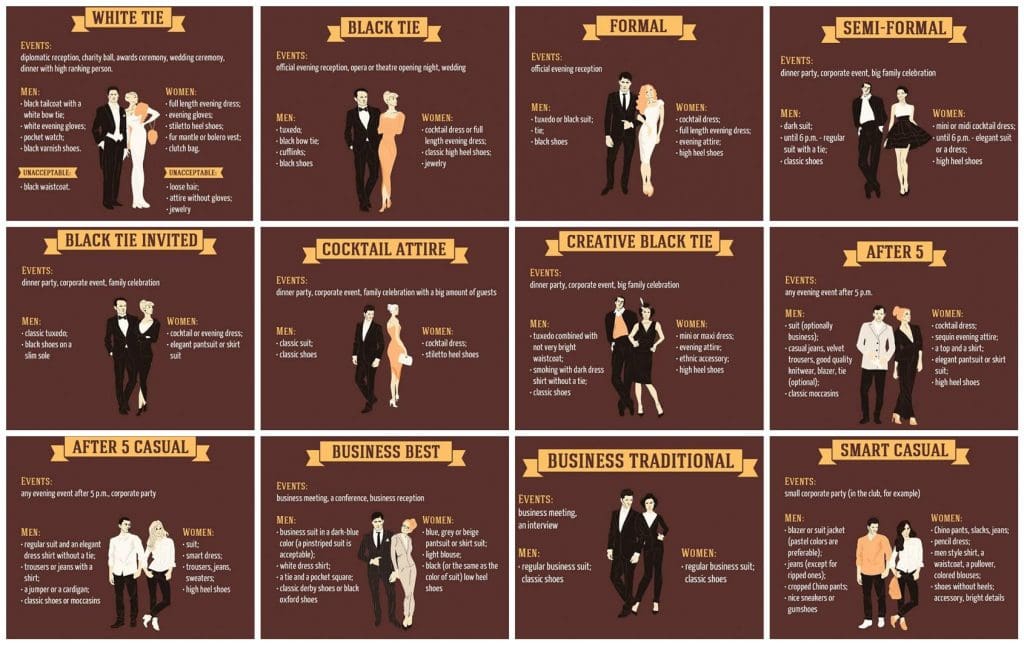
Eating Difficult Foods Can Be Tricky
How do you go about eating peas in a 5-star restaurant?
How do you eat olives with pips in them in front of your CEO? How do you eat that deliciously custardy piece of malva dessert without messing?
Here are some quick tips for eating messy or problem foods, along with some general rules or etiquette for difficult food consumption:
- Never ever use your fork tines up. In other words, never use your fork like a shovel or scoop; always use your fork tines down. It is impolite to shovel food into your mouth. But how do you eat peas? Use your knife to squash peas and other similarly slippery or spherical foods onto the downturned tines of your fork. Yes, this will mean smaller bites, but etiquette dictates taking smaller bites is a more tasteful practice anyway.
- When eating stone fruit, such as cherries, or eating foods with pips, such as olives, there is only one polite way to eat the fruit or food with a pip. While you may have been taught that the fruit is placed in the mouth whole and the pip or stone is to be gently spat, for lack of a better word, onto a fork before being deposited on the side of your plate you’d be wrong. This is considered incredibly distasteful. Proper etiquette dictates that you put the whole fruit or food with a pip in your mouth, yes, but it is perfectly acceptable, and preferable, to remove the stone or pip from your mouth with a thumb and a forefinger and to place the pip or stone in your side plate or bread plate, or on the side of your plate. Never place the pip or stone in your napkin.
- When presented with both a fork and a spoon for the dessert or dessert course, bear in mind that the fork is merely supposed to be used to push dessert onto your spoon. The fork is never supposed to be taken to the mouth.
- Never put the whole fork or spoon into your mouth, no matter the meal or course thereof. Never bring a knife to your mouth.
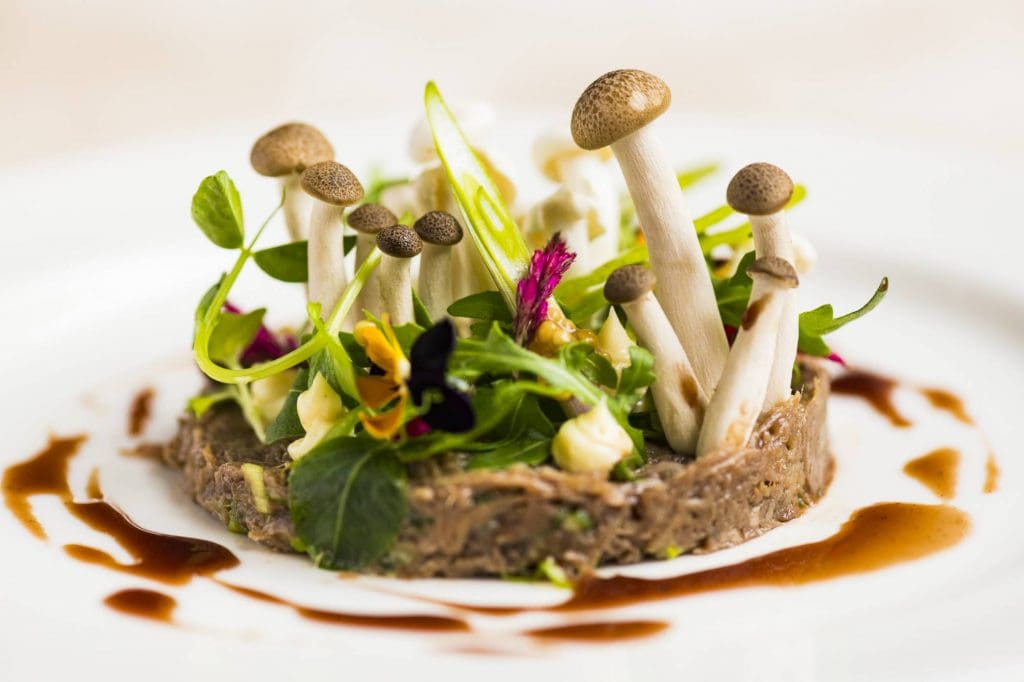
Appropriate Dinner Conversation
When you are dining with family or with a romantic partner, the rules of the game are obviously a bit different, however, the following general rules can prevent you from making a conversational faux pas at the dinner table:
- Avoid all topics related to, and including, sex, politics, and religion.
- Ask your neighbour questions about themselves if you do not already know one another, but do not ask personal questions. For guidance on what might constitute a personal question: see above.
- Dedicate 50% of your conversational time and energy to your neighbour on your right, and the remaining 50% to your neighbour on your left. It is very rude to talk only to one of your neighbours.
- If you must make jokes, make sure that they are tasteful and have nothing to do with, as mentioned above, sex, politics or religion.
- It is also not polite to talk about the body or any bodily functions at the dinner table. If somebody mentions a recent surgery they or an acquaintance had it is appropriate to express your concern or well wishes, but not to ask questions that might lead the sharer of the news to commit a faux pas and discuss the body or bodily functions at the dinner table.
- Do not discuss business at the dinner table unless all present can join in on the conversation, or if the meal was specifically organized for the purpose of discussing business in a more casual setting (than the office boardroom).
- Do not complain at the dinner table. Not about the service, or your meal, definitely not about the prices, not about the host’s choice of wine, or about your fellow patrons. Wise people discuss abstractions, intelligent people discuss current events, poor dinner companions discuss one another.
Who Pays The Bill
Fine dining etiquette dictates that whoever did the inviting must pay the bill. It is the host’s responsibility to arrive early enough to leave their credit card with the server or restaurant hostess beforehand so that there can be no grabbing for the bill once it arrives.
In fact, following proper etiquette means preventing the bill from ever reaching the table. By presenting her credit card to the hostess beforehand, a female host of a business dinner can also avoid her male associates insisting on paying the bill.
If they ask for the bill she can politely inform them that it has already been taken care of. If they insist, she can always inform them that the company has already settled the bill on her behalf.

While fine dining may seem intimidating at first, we guarantee that with practice, and upon thoroughly familiarizing yourself with our ultimate guide to fine dining etiquette, you will come to find fine dining a pleasurable experience like no other.
While there are tons of online tutorials and resources where you can gather even more information on fine dining and the associated etiquette, we promise that if you internalize the above, and follow your host’s lead, you’ll be just peachy!
This ultimate guide to fine dining etiquette has included more than just the basics, and more than enough to see you rock that company fundraiser, or make your best friend proud as maid of honour at her sit down reception.
We look forward to welcoming you and your guests to dinner soonest!
Sources:
Top 10 Rules for Fine Dining – Listverse.com
15 Etiquette Rules For Dining At Fancy Restaurants – Businessinsider.com
Dining Etiquette – Etischool.co.za
The Fine Dining Guide: Basic Restaurant Etiquette One Should Follow – Food.ndtv.com
Fine Dining Etiquette – Finedininglovers.com
Fine Dining Etiquette for Servers – Webstaurantstore.com
Fine Dining Etiquette – Personalitytutor.com
Top 10 Rules For Fine Dining – Foodnetwork.ca
Dining Etiquette – Etiquettescholar.com
Guide: Fine Dining Etiquette – Luxury-insider.com
14 Dining Etiquette Rules You Need To Know – Americanexpress.com


